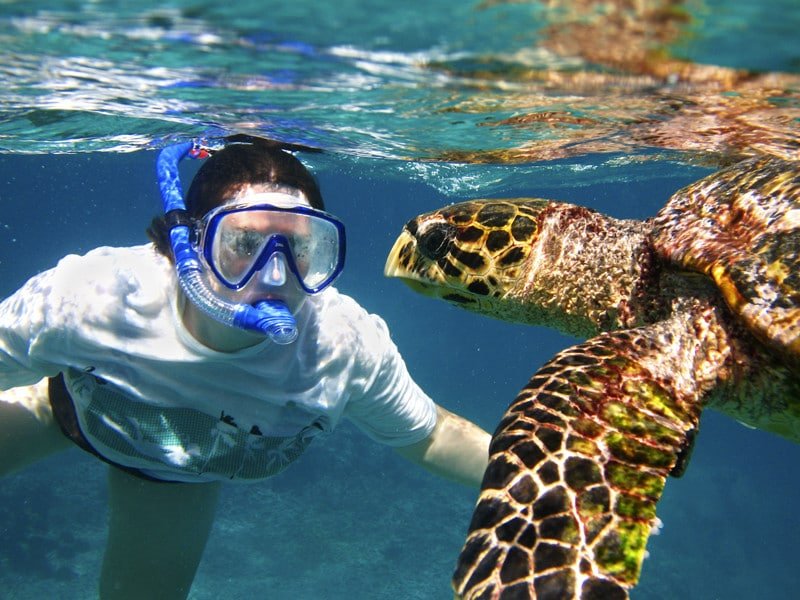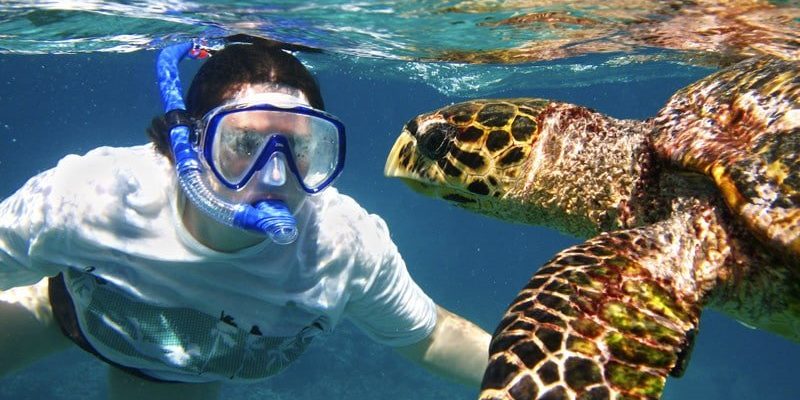
The green sea turtle, with its distinct olive-green shell and calm demeanor, is certainly an icon of the ocean. But with all creatures, there’s a right way and a wrong way to interact with them. Whether you’re a snorkeler hoping to catch a glimpse of these turtles or a nature lover wanting to learn more about their behavior, you might be wondering how to connect with them without causing harm. Let’s dive into the world of green sea turtles and explore how we can enjoy their company safely.
Understanding the Green Sea Turtle
First off, let’s get to know the green sea turtle a little better. These turtles are among the largest of the hard-shelled sea turtles, weighing anywhere from 240 to 420 pounds, with some even bigger! They can live for quite a long time, often reaching ages of 60 years or more. Each turtle has a unique shell pattern, much like our fingerprints. This makes them easy to identify for researchers studying their behaviors and migration patterns.
Green sea turtles are primarily herbivores, munching on seagrasses and algae. This diet is not just essential for their health but also plays a crucial role in the health of our oceans. When they graze on seagrass, they help to maintain healthy underwater ecosystems. So, every time you see one, remember: they’re not just swimming around; they’re doing some important work!
Where Are They Found?
You might be surprised to learn that green sea turtles are found in warm oceans around the globe. Common habitats include the Caribbean Sea, the Gulf of Mexico, and the Mediterranean Sea. They tend to prefer shallow coastal waters, where seagrass beds are abundant. However, these turtles are migratory, traveling thousands of miles to find nesting beaches. This incredible journey makes them vulnerable to various threats that we must be aware of.
Benefits of Interacting with Green Sea Turtles
Engaging with green sea turtles can offer a wealth of benefits, both for humans and the turtles themselves. For instance, responsible interactions can promote conservation efforts and raise awareness about marine health. When people see these magnificent creatures up close, it can spark a desire to protect their habitats.
Taking part in responsible eco-tours or volunteering for turtle conservation programs often provides educational experiences. You might learn about their life cycle, nesting habits, and the challenges they face due to pollution and climate change. Understanding these connections can empower you to make better choices as a consumer and advocate for marine conservation.
Here’s the thing: when more people appreciate green sea turtles, there’s a greater chance for their protection. It’s a win-win situation!
How Interactions Can Encourage Conservation
When tourists and conservationists work together, we can foster a deeper respect for wildlife. Many conservation programs focus on educating people about the importance of keeping marine habitats clean and reducing plastic usage.
Moreover, when people engage positively with the turtles and their environment, they often become advocates. They share their experiences and inspire others to take action for the protection of these magnificent creatures.
Safe Practices for Interacting With Green Sea Turtles
So, how can you interact safely with green sea turtles? It’s all about respecting their space and recognizing their natural behaviors. Here are some essential tips to ensure both your safety and theirs:
- Keep your distance: Whenever you see a green sea turtle, observe from a distance of at least 10 feet. Getting too close can stress them out.
- Avoid touching: Touching or grabbing the turtles is a big no-no. They have a protective layer of algae that helps keep them healthy, and handling them disrupts this natural defense.
- Don’t disturb their nesting sites: If you come across a nesting turtle, keep your distance and watch quietly. Never approach or interfere with them.
- Be mindful of your gear: If you’re snorkeling or diving, make sure your fins and equipment don’t accidentally harm the turtle or its habitat.
By following these guidelines, you can help ensure that interactions with green sea turtles remain safe and enjoyable for everyone involved.
Common Misconceptions About Green Sea Turtle Interactions
There are quite a few myths floating around about green sea turtles. Let’s clear a couple up.
One common misconception is that turtles are friendly and social creatures. While they can be curious, they are not like dogs looking for playtime. They prefer to keep to themselves in the wild. Approaching them expecting a social interaction could lead to frustration for both you and the turtle.
Another myth is that all turtles are the same. Each species has unique behaviors and needs. Green sea turtles are herbivorous, while others, like loggerheads, primarily dine on jellyfish. Knowing these differences helps us interact better with them according to their specific needs.
Real-Life Examples of Safe Interactions
There are many successful stories of humans interacting with green sea turtles in a respectful way. For example, in places like Hawaii, eco-tours allow people to snorkel in the ocean while a guide educates them about green sea turtles. Participants are taught how to interact safely and what to do if they encounter a turtle. These tours often contribute to local conservation efforts through entrance fees and donations.
Similarly, volunteer programs often work directly with nesting sites, allowing volunteers to observe nesting behaviors from a safe distance. This not only helps protect the turtles but also provides valuable education about the species and the challenges they face.
The Impact of Human Activity on Green Sea Turtles
Understanding how human activity affects green sea turtles is crucial. Unfortunately, pollution, rising temperatures, and habitat destruction pose significant threats to these beautiful creatures. Plastic waste is a major concern. Many turtles mistake it for food, leading to dangerous health complications.
Coastal development can destroy nesting sites, leaving fewer safe places for turtles to lay their eggs. Additionally, climate change is causing ocean temperatures to rise, affecting the growth of seagrass beds—the turtles’ primary food source.
You might be wondering what you can do to help. The good news is that individual actions can make a difference! Reducing plastic use, supporting conservation organizations, and participating in local clean-up efforts can help give green sea turtles a fighting chance.
Final Thoughts on Safe Interaction with Green Sea Turtles
Interacting with green sea turtles can be a magical experience, but it’s essential to approach it with respect and understanding. By keeping a safe distance, protecting their habitats, and participating in conservation efforts, we can enjoy the beauty of these magnificent creatures while also doing our part to protect them.
Remember, every effort counts. The next time you’re lucky enough to see a green sea turtle, take a moment to appreciate not just its beauty, but also what it represents: a delicate balance of nature that we all share. Let’s honor that balance together.

